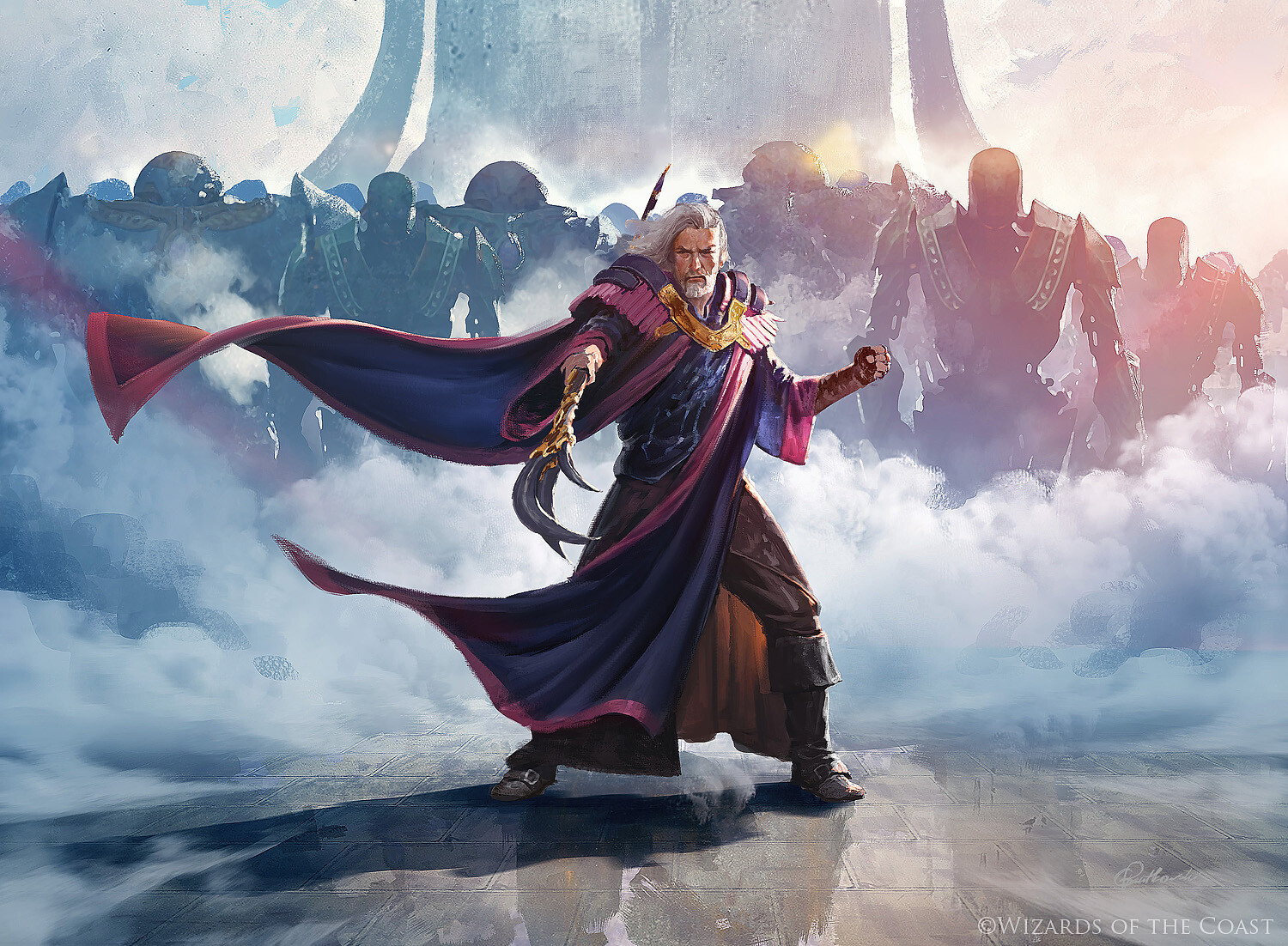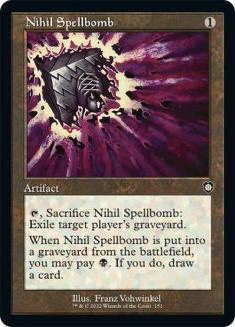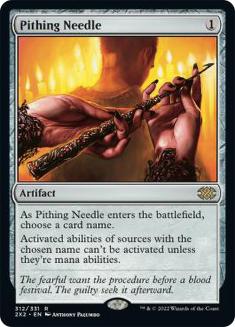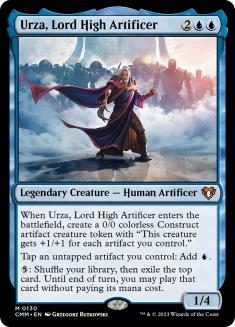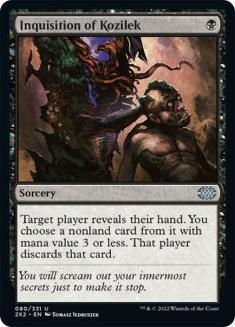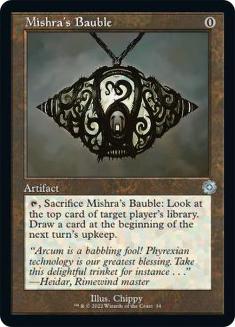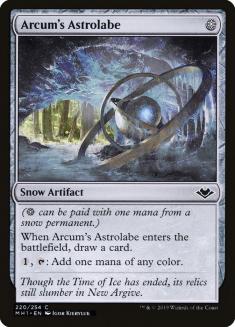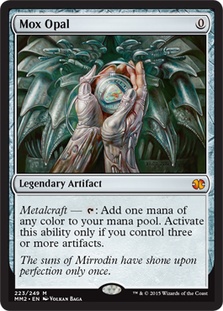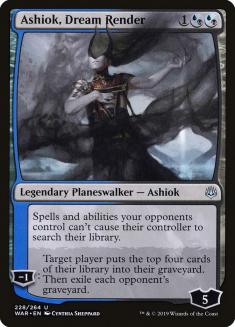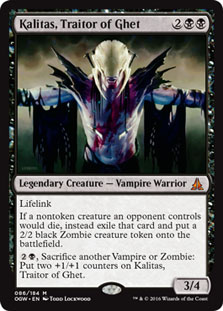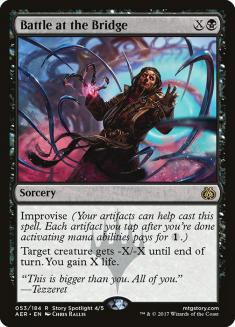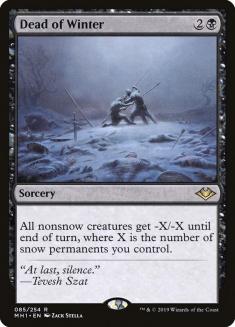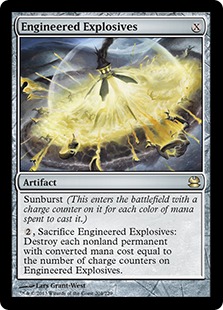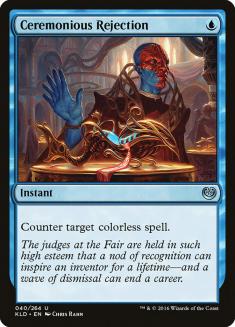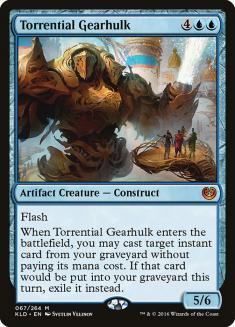Unique deck creations in Magic can lead to disappointing results if not done correctly. There are some cards in the competitive formats, no matter how much I wish it, that are just not good and cannot be used. Sphinx’s Revelation will not be a Pioneer staple in the foreseeable future, and it is tough at times for me to accept that. Many of us have pet cards, like my card draw spells and Eli Kassis‘s maindeck Pithing Needle and Nihil Spellbomb, that we have a difficulty cutting from an array of decks that us brewers craft.
I usually talk my main man, Eli Kassis, out of playing his brews in larger tournaments. If you follow the elders of Team BCW, you’ll notice that Eli and I tend to play rogue strategies at every available opportunity. The truth is that both of us, control aficionado and combo/midrange specialist, do much better when we play decks more in the mainstream.
This doesn’t mean either of us abandon our roots; however, it has impacted what we each play on any given weekend. Luckily for me, Azorius Control is easily the best deck in Standard now, making my deck decision simple and fruitful. When control is at a weak point in a format, it can be a difficult journey for yours truly. The same holds true for Kassis, except he has a slightly wider range and much better technical play when adapting to a new archetype.
His Mythic Championship Top 8 was a breeze with a modest Golgari Adventures deck that he copied from a strong online finish. Prior major accomplishments of his have been made with known decks, but this recent Open victory in Richmond was different. He was convinced that Urza, Lord High Artificer is still the mightiest threat in the Modern format. It turns out that Kassis was absolutely right, leading his team forward in their dominant performance.
When Kassis does well with a deck like this, a pile of random Dimir and artifact nonsense, it must be examined further. As I mentioned, Kassis is one of the best players I have the pleasure of being friends and working with, but even that skill needs a vessel to hoist a trophy at the end of the tournament. Team tournaments must have their results examined due to the nature of having teammates that can win while the third loses. Kassis lost only two matches that entire weekend and I personally witnessed his domination without the assistance of Mox Opal.
Creatures (4)
Lands (24)
Spells (32)

Urza, Lord High Artificer is still one of the most powerful late-game cards in Modern. It provides a giant threat, produces a ton of mana, and allows excess resources to turn into card advantage. Even without Mox Opal, Urza, Lord High Artificer arrives to the battlefield in a timely fashion. Kassis’s list contains a few copies of Talisman of Dominance that have been joined by Pentad Prism in prior versions. This mana boost provides the deck a little burst, but it isn’t required in Dimir Whirza like it had been in prior iterations. Dimir Whirza basks in taking its time, developing a clean battlefield with powerful control elements, and eventually applying pressure with a giant Construct once the coast is clear.
Just like in Pioneer, Modern decks with cheap disruption are where a control mage wants to be. This isn’t the traditional control strategy that many of us know and love, but it is from the mind of a player that can adapt when the format demands it. There are times I must slap the goofy cards out of his hands, but often he has the pulse of the format when building decks like this.
Dimir Whirza attacks the Modern metagame with a split between Inquisition of Kozilek and Thoughtseize. I was known for my Esper Stoneblade use in Legacy, which also used that same split. There are some who criticize this, suggesting that the format should be addressed by what the flavor of the month is: if there are many aggressive decks, play four Inquisition of Kozilek and zero Thoughtseize, and employ the opposite if the format metagame calls for it.
The reality of Modern is that decks do not go away, regardless of where they are in the power rankings. Players are still going to use their Mono-Red Prowess, Humans, Ad Nauseam, Azorius Control, or any other deck that they have access to. Magic is an expensive game and only a few grinders are willing to completely change decks each week. This is one of the reasons why finding a deck that tackles the widest metagame that any format has to offer is huge.
Having hand disruption is essential for a control deck to flourish in Modern. Counterspells are still weak in the format and being proactive provides the best chance for victory. Although Dimir Whirza has seven counterspells main, six of them do additional things. Cryptic Command has fantastic synergy with a heavy blue control deck, utilizing Mystic Sanctuary better than the rest of the competition. That combo can create a lock that is very difficult to overcome. Archmage’s Charm and Drown in the Loch both have other modes, which are always going to be useful.
Archmage’s Charm has come through as the next-best thing to Cryptic Command, drawing cards and stealing permanents when the opportunity arises. Drown in the Loch has become the best one-of in Modern control decks. I have tried to play more of it in different decks; however, it is a significant liability when drawn early and in multiples. With just one copy floating around in the deck, it often arrives at the perfect time, killing or countering anything played. It is important for these counterspells to perform other tasks when spells have already resolved. This is part of the format awareness required for effective deck building.
The last counterspell is a single Deprive, which gets the cut from my version. After speaking to Kassis about a few of his card choices, he agreed that the Pithing Needle and Nihil Spellbomb need to go. Removing these three pet cards creates space to maximize the busted control resources and acceleration. Adding the fourth Fatal Push, Archmage’s Charm, and a Pentad Prism gives the deck a bit more consistency. Nothing about these swaps change the fundamentals of the deck, which centers around the powerful artifacts.
When I say powerful artifacts, some may look around for something expensive and flashy. Unfortunately, the most powerful artifacts in Modern cost very little mana and cantrip. Mishra’s Bauble and Arcum’s Astrolabe are still the best early plays for an Urza, Lord High Artificer deck. Mishra’s Bauble is great, but Arcum’s Astrolabe is the champion between the two. Playing one gives deck thinning, future mana, mana fixing, and fuel for Whir of Invention. This all occurs for the cost of one-mana, making it the base for any future control aspirations.
These cheap artifacts provide the fuel for the eventual Urza, Lord High Artificer and Whir of Invention. Whir of Invention has come with the combo tag ever since its release. This Instant provides either a Sword of the Meek or a Thopter Foundry, assembling an army of Thopters and a huge chunk of life replenishment. This is a beatable combination, except when Urza, Lord High Artificer is there; then it is game over. The mana produced by Urza, Lord High Artificer crafts a Thopter token, which then taps for mana itself. This combo creates an infinite amount of threats and life. The world thought this died off with the banning of Mox Opal and that could not be further from the truth.
The removal of Mox Opal only pushed the Thopter/Sword combo into a complete control shell, making me a very happy competitor. Kassis created this deck from a stubbornness to give up on his past success with the archetype and struck gold in the process. In action, Dimir Whirza plays the early-game in a complete control fashion. Leading off with cantrips, hand disruption, and cheap removal. These actions are carried out by a pristine manabase that has the luxury of running Field of Ruin in true show-off fashion. That is what Arcum’s Astrolabe and a two-color setup does for deck building.
The mid-game is dominated by playing pieces of the combo, leading out Urza, Lord High Artificer to slaughter, and having the counterspells do the heavy lifting. This play pattern is only changed slightly from the few Talisman of Dominance / Pentad Prism slots that can speed up the process. The late-game can vary between deriving card advantage through Urza, Lord High Artificer; beating down with Construct tokens; locking the opponent out with Cryptic Command / Mystic Sanctuary; and using Whir of Invention to complete the missing half of the combo. The late-game sounds like Whirza decks of the past, but the consistency is cranked up in place of the power.
The sideboard is fine as is and I wouldn’t change anything at this point. If graveyard-based decks get popular in the future, more slots must be dedicated to defeating that strategy. As the deck is currently built, one Grafdigger’s Cage will not be able to handle an army of Vengevines. Luckily for fans of Dimir Whirza, those decks are rarely played. The Ashiok, Dream Render and Kalitas, Traitor of Ghet offer some graveyard assistance, but their primary purpose is for the mainstream of Modern.
Ashiok, Dream Render is one of the best sideboard cards for control. It completely shuts down Amulet Titan, as well as any other Primeval Titan strategy. Shutting down search effects is huge, especially when those decks do not have many ways to remove a planeswalker with five loyalty. Kassis boasted about his 9-0 record against Amulet Titan in the Team Open, which makes me confident that the amount of hate in the sideboard is enough. Ashiok, Dream Render combined with Aether Gust is enough to put the green ramp threats to rest.
Kalitas, Traitor of Ghet is a sweet hate card against recursion and burn. Lifelink is my favorite keyword in the history of the game and for good reason. There is nothing worse than playing a control deck that can’t beat Mono-Red Aggro and the like, which is why Dimir Whirza is the answer moving forward. Although it doesn’t have Oko, Thief of Crowns to lean on, it does have lifegain options in the sideboard.
I have given my teammate grief for Battle at the Bridge in the past, but it was out of love. Even in my Ironworks Combo days, I had a few of these in the holster to defeat Mono-Red Aggro. It looks silly due to its lack of play these last few years. The reason why it wasn’t used is because Dimir control strategies were not viable. White has better options; however, this is the best that a Dimir deck with artifacts can muster.
The Dead of Winter and Engineered Explosives are all-stars against creature-based decks, just as Ceremonious Rejection is against Mono-Green and Eldrazi Tron. There are some cards that need little explanation and these two fall into that category.
The final card in the sideboard that needs a bit of a breakdown is Torrential Gearhulk.
The first thought I had when I saw this deck was to add Snapcaster Mage to the mix. Wherever there was disruption and countermagic in Modern, Snapcaster Mage was also in the mix. The versatility it provides as early as Turn 3 is astounding, making the early disruption come back to life. Even when used in the late-game, Snapcaster Mage provides a powerful counterspell’s return.
When tried in Dimir Whirza, it surprisingly fell short. The early turns are much more scripted, firing off disruption just to get to a launching point for a combo kill or Urza, Lord High Artificer pressure. In a control deck, there are blue cantrips to flashback when disruption isn’t applicable, but that wasn’t the case here.
Luckily for fans of that effect, the one Torrential Gearhulk provides that powerful versatility late in the game. Just as the removal spells shrink after sideboarding, we bring in this huge creature with flash for the knockout. All in all, Dimir Whirza is the best control deck that we have had in Modern and it may even be the best deck overall.

